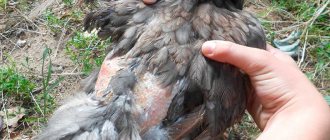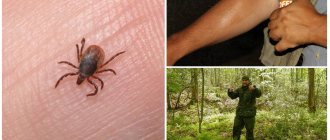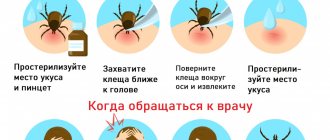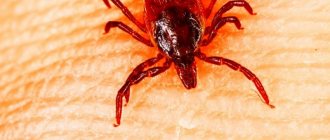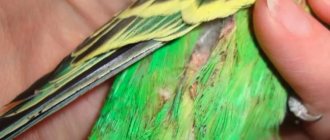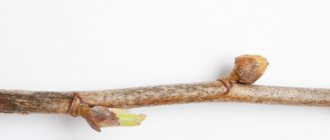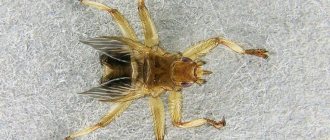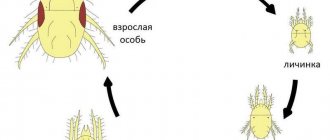Poultry in the summer is often attacked by ectoparasites. Feather mites in chickens are a problem that every farmer may face. Those who have just begun to engage in poultry farming should know that laying hens are attacked by different types of skin parasites, including the scabies mite. It is important to learn to recognize signs of chicken infection at the initial stage, because productivity indicators depend on this.
Feather mite in chickens
Lice
Lice appear in chickens when living conditions deteriorate and when the bird comes into contact with infected individuals. Nervousness and scratching the affected area are the main symptoms of infection.
It is possible that the cause of lice was a change in diet, wet weather or decreased immunity.
In any case, it is important not only to treat the birds and the chicken coop, but also to find out the main cause of infection
Note: lice are noticeably more common in roosters, since they clean their feathers less often and take ash-sand baths.
Bedbugs
They are rare, have a length of 2-5mm and small wings. Color, depending on the species, varies from dark brown to red and yellow.
Bird bugs feed on blood and greatly affect the condition of chickens. They are also dangerous to humans. They usually hide in dark places, crevices, cracks, under feeders and nests.
Detection of infection with internal parasites is only possible by contacting a veterinarian. But if there are individuals in the chicken coop that lay eggs without shells, then there is a suspicion of infection with trematodes, which cause inflammation of the rectum in the bird.
Trematodes and other helminths cause intoxication of the chicken’s body, which, in turn, leads to a decrease in egg production, weight loss and death of the birds.
How to treat a chicken coop for lice, fleas, ticks
It is possible to get rid of chicken lice and fleas in a chicken coop by carrying out a set of measures. It is imperative to identify the external cause of the infestation and eliminate the source of insects entering the birdhouse. It is necessary to disinfect not only the surfaces of the poultry house, but also perches, nests and even feeders.
Specialized products are used as needed and to prevent infection of the chicken coop. At the same time, most owners of private farmsteads prefer no less effective products that they make themselves.
During the reaction, intense evaporation of the components occurs, and conditions are created that exclude the presence of insects in the room. Prevention is carried out once a week with intensive ventilation.
The veterinary drugs neostomazan, sevin or malaton will help against the fluff eater. They have a low level of toxicity when used in the correct dosage. Chickens are treated with the prepared emulsion immediately after its preparation. It is enough to carry out two treatments within a week, but do not allow the drug to come into contact with the mucous membranes.
The chicken coop is disinfected with sulfur bombs, and ash baths are prepared on the run for “bathing” the chickens.
Treatment of the chicken coop from ticks is carried out as follows:
- Insectoacaricidal preparations (Sevin, Diazinon, Stomazan and others) are purchased;
- All cracks in the chicken coop are sealed;
- Ventilation is turned off if present;
- Mechanical cleaning of the chicken coop is carried out;
- Cracks in walls and perches are treated with a concentrated oil-based preparation;
- The prepared solution is sprayed on walls, ceilings, floors and equipment;
- After treatment, intensive ventilation of the room is carried out for 3-4 hours;
- Drinkers and feeders are washed.
To treat chickens for ticks, consult a veterinarian who can advise you on an effective commercially available insect control product.
VIDEO REVIEW
Chicken processing
If you use drops, ointments or gels against parasites, then each bird should be treated with these products separately. This method is suitable if you keep no more than 20-30 chickens and processing is not difficult.
The procedure should be carried out before disinfecting the chicken coop in the morning. When the chickens have woken up and are about to leave the premises, you can easily catch them one by one.
Usually the withers or neck are treated so that the chicken cannot reach this area with its beak and the product does not enter the digestive tract.
If you have a large farm, it is better to use powder products.
The best remedies for parasites
Insecticides that are sold in veterinary pharmacies are suitable for treating the chicken coop. Many of them are safe for people and animals.
Get, Hartz, Karbofos, Cucaracha, Pyrethrum, Sevin Emulsion, Tetrix, Raptor aerosol, Karbofos emulsion, Tsifoks, Reid, Mashenka.
Drops/gels
They are applied to the withers and just below the head so that the chicken does not reach with its beak and the drug does not enter the digestive system.
Dana, Celandine, Amidel, Neostomazan, Perol-A, Beafar, Bars, FrontLine, Stomazon.
Deltamethrin/Butox
Treating chickens against ticks with Butox should be done with extreme caution. These drugs are used on large poultry farms
The diluted solution is applied with a wet rag or spray to the withers, where the chicken cannot reach with its beak.
Recipes from the people
Despite the effectiveness of chemicals, many gardeners and summer residents prefer to use folk remedies for spider mites, the main advantages of which are safety and accessibility.
Decoctions and infusions
Herbal decoctions and infusions are widely used in pest control.
- Garlic (2 heads) is finely chopped, poured with water (1 liter), and left for 5 days in a dark place. The resulting infusion is filtered, the same amount of water is added and used to spray infected plants.
- It is good to remove parasites with mustard, the smell of which spider mites really do not like. 60 g of dry powder are diluted in 1 liter of water and infused for 3 days.
- Onion peel (100 g) is filled with water (5 l), infused for 5 days. After which the infusion is filtered and used to treat plants affected by mites.
- Dry or fresh alder leaves (200 g) are poured into 2 liters of water and boiled over low heat for 30 minutes. After which the broth is infused for 12 hours, filtered and used for spraying.
- Dandelion leaves and roots (100 g) are poured with hot water (1 l) and left to infuse for 3 hours. The strained infusion is used in the same way.
Soap
Soap solution against spider mites
A soap solution (20 g of soap per 1 liter of water) gives an effective effect in the fight against spider mites. It is better to use regular laundry or green soap to prepare the solution. It is necessary to wash the leaves on both sides with a cloth soaked in soapy water, avoiding contact of the composition with the roots of the plant.
To spray flowers and garden plants, you can also use sulfur-tar soap (100 g of soap per 10 liters of water). The procedure is carried out 2-3 times a week.
Hydrogen peroxide and potassium permanganate
To combat spider mites at home, use a solution of hydrogen peroxide, which is prepared at the rate of 2 tbsp. l. (3%) product per 1 liter of water. Spraying is carried out once a week for a month, which allows you to destroy the entire harmful family over time. To treat the soil, use a weak solution of potassium permanganate.
Ammonia
Ammonia has similar properties. The solution is prepared in a ratio of 1 tbsp. l. for 10 liters of water. The resulting composition is used to treat the leaves on both sides, which will not only remove mites, but also saturate the plant with nitrogen.
Regular inspection of them and adherence to the rules of caring for them will help prevent the spread of pests on indoor flowers or seedlings: regular watering, timely weeding and fertilizing of plants, as well as the use of folk remedies for preventive purposes.
Tick prevention for people
A chicken mite found on a person's body will resemble a small ball of dirt stuck to the skin, most often on the leg. If you brush away the “lump”, bite marks will remain
Frequent tick bites can cause allergies or dermatitis, so precautions are needed not only for birds, but also for people who work in the chicken coop. Chickens are cared for in special clothing (rubber boots, thick trousers)
Do not neglect overalls, even if you go into the chicken coop for a few minutes.
It is easier and more effective to act proactively than to remove chicken mites, especially since some parasites are extremely difficult to get rid of. Do not neglect such simple but effective measures as regular inspection of the chickens and the poultry house itself, and cleaning the premises.
Attention, TODAY only!
Similar
Danger to humans
When pigeons nest near human habitations, ticks can attack people. Dermanyssus gallinae is just one of six species of bird mites that can bite humans. In the absence of a true host, these parasites will actively attack people, usually biting them on the lower part of the body. Poultry farmers who raise chickens are at increased risk.
At the site of the bite, a very itchy spot appears in the form of a macula, papular, vesicular rash or irritation resembling urticaria. There are several scientific reports that chicken mites can infect humans with infectious diseases, but this theory has not received practical evidence.
Chicken mites cause a lot of problems not only for the birds themselves, but also for farmers and poultry farmers. In the event of infection with a dangerous ectoparasite, laying hens' productivity decreases and the condition of their feathers deteriorates. Chickens and young broiler breeds infested with feather mites lag behind in growth and development compared to their healthy peers and slowly gain weight. Despite the fact that parasitic mites are most active in the warm season, birds can become infected in any season. How dangerous are chicken mites? How to fight and completely get rid of chicken mites?
What to do if birds are infected with mites?
To avoid the death of an infected bird, you must begin to fight parasites immediately after they are detected. The measures taken must be comprehensive. The fight against ticks involves not only treating the inhabitants of the chicken coop, but also treating it. This is the only way to remove ectoparasites that have infected chickens. In order not to endanger your health, you must follow safety precautions while working.
How to treat a bird?
Treatments to get rid of these parasites depend on the type of parasite they are. Thus, the fight against Syringophilus bipectinatus using external means will not bring the expected effect, which is explained by the residence of these mites inside the feather shaft, where such acaricides are not able to penetrate. To destroy other types of ectoparasites, topical preparations are suitable. Information on how to treat infected chickens is presented in the table:
| Types of ticks | Treatment methods | Medicines used | Features of application |
| Feather | Oral medication | Ivermectin | Feed sick birds with the drug diluted according to the manufacturer's recommendations. The medicine requires 3 times of use. The second time it should be given to the chicken 24 hours after the first, the third - 14 days after the previous one. |
| Scabies | Use of acaricides for external use | Aversectin ointment | The product is applied to the affected areas of the body in a thin layer. To completely cure a bird, several treatments at 5-7 day intervals are sufficient. To get rid of parasites, it is necessary to individually treat the sick bird by dusting it at the rate of 20–50 g of powder per bird. The product is applied to the chicken's body in a thin layer using a brush, and then rubbed into the skin. After 1–2 weeks, the treatment should be repeated. |
| Red | Ectosan powder | ||
| Insectin | |||
| Sevin |
To get rid of ticks, you can also use folk remedies prepared independently at home from available ingredients. Information about them is presented in the table:
| Ingredients | Preparation | Application |
| Garlic, essential oil (clove, cinnamon, mint, lavender) | Mix 300 ml of water, 30 ml of freshly squeezed garlic juice and 1 tsp. oils | Spray the mixture onto infected birds. Do the procedure every other day for several weeks. |
| Sand, ash | Mix the components in equal parts. | Place a container with a sand-ash mixture in the chicken coop. By bathing in it, chickens get rid of parasites. |
| Birch tar | Not required. | Apply tar to chicken feet for 10 days. |
How and with what to treat a chicken coop (cage)?
Ectoparasites that parasitize chickens can live for a long time outside the host. They hide in the coop's crevices and bedding. One of the mandatory stages of getting rid of ticks is treating the room in which the infected bird lives. The following methods are used for this:
- Descarification using highly effective preparations in the form of powder or spray. For this purpose, you can use “Tsiodrin”, “Karbofos”, “Chlorophos”, “Neotsidol”.
- Treating floors, walls, perches with boiling water.
- Warming up metal structures with a blowtorch.
- Igniting a sulfur bomb.
To achieve the best effect, it is recommended to carry out the treatment several times with a 3-6 day break. For decontamination, you can use folk remedies based on garlic, hang or place bunches of wormwood or mint, tomato or potato tops, onion feathers, and garlic arrows in the corners of the chicken coop.
Safety precautions when working with infected birds
When working with infected chicken coop inhabitants, the following rules must be observed:
- isolate infected individuals from healthy ones;
- during decontamination, relocate the poultry population to another place;
- burn all bedding;
- work in a respirator, protective clothing (it is advisable to use a special suit), rubber gloves and boots;
- do not allow children and pets to stay nearby when working with chemicals;
- After completing the procedure, thoroughly wash your face and hands with soap and running water.
Effective Methods for Cleaning a Chicken Coop
The main control method that will allow the removal of ticks from poultry is complex disinfection, decontamination of the poultry house, cages, and premises in which the poultry is kept. Treat walls, floors, perches, ceilings, and equipment with insecticidal-acaricidal solutions and special chemicals. Wash feeders and drinking bowls thoroughly. Replace the bedding.
Floors, walls, and perches in chicken coops can be treated with boiling water or a blowtorch. To prevent ticks in the poultry house, you can hang wormwood, mint, tomato, potato tops, parsley, onions, and garlic in the corners. The aromas of these plants repel not only chicken mites, but also other ectoparasites.
For decarification you can use:
- cyodrine 0.5%;
- dicresol 0.25%;
- karbofos;
- chlorophos 1–2%;
- trichlorometaphos 0.5–1%;
- DDVF 0.25–0.5%;
- neocidol 0.25–0.5%.
Chlorophos is used to disinfect poultry houses
Important! If a bird is affected by red or Persian mites, the poultry houses are treated two to three times with an interval of 3–6 days.
Examine the chickens carefully. If there are wounds or scratches on the body, treat the affected areas with antiseptic solutions. The affected areas can be lubricated with vegetable oil, wound healing ointments, and liniments.
There are many effective acaricidal agents on the market to combat chicken mites. To get rid of parasites, veterinarians recommend using for chickens:
- Sevin (powder).
- Ecoflix (oily liquid).
- Extrasol M (aerosol).
- Pyrethrum.
- Promectin.
- Ectomin (emulsion).
- Spray with pyremethrin EC (new generation insecticide).
Acaricide against ticks for birds
In case of severe infestation, ticks will have to be removed in several approaches. Treatments are carried out at intervals of 5–10 days, depending on the product used.
Before use, carefully read the instructions for the drug. When choosing an insecticide-acaricide, be sure to consult a veterinarian. Some drugs are strictly forbidden to be used for treatments, since their active substances accumulate in eggs and meat.
In the fight against chicken mites, you can use folk remedies. Add wood ash to sand baths. By cleaning the feathers in this mixture, the bird removes parasites from the body. Sand baths with ash are also a good method of preventing chickens from becoming infected with mites. Do not forget to periodically change the composition of the “dusty” baths.
How to recognize and why it is dangerous
It settles on the feet of chickens, in feather follicles and pouches, and lives in the subcutaneous folds of the epidermis. In addition to living on the body of birds, the chicken mite can settle on any surface in the poultry house.
The presence of a parasite can be detected by visual symptoms:
- insects are noticeable on walls, under perches and in cracks between floorboards;
- an infected bird's appetite decreases, activity decreases, and itching appears, which is manifested by chickens plucking feathers;
- the amount of time hens and chicks spend in sand baths increases;
- chickens do not want to enter the poultry house and begin to build new nests;
- the livestock begins to lay eggs in reduced quantities;
- chickens infested with feather mites begin to lag behind in development, young animals significantly reduce the intensity of weight gain;
- featherless bald spots appear on the birds' skin, the quality of the feather itself becomes noticeably worse, and ulcers and scratches become noticeable.
Symptoms of the appearance of an ectoparasite:
- frequent coughing attacks;
- dyspnea;
- increased feeling of thirst.
Blood-sucking parasites lead to depletion of poultry, cause disruption of the protective function of the skin, creating a favorable environment for infections, lead to deterioration in the quality of feather cover and transmit infectious diseases that are deadly for poultry. Among day-old chicks affected by the parasite, mortality rates reach high levels.
Chicken mites can be recognized on birds by visual inspection - small red or black dots are noticeable on the feathers and skin. Wherein:
- The red chicken mite is no more than 0.7 mm long, has a yellow or brown color, and after filling with blood it becomes a rich red or purple hue.
- red chicken mite forms massive colonies on litter, because the parasite prefers damp, warm, poorly ventilated places;
- feather mites in chickens can be easily found on the core of the feather or in the hole, where it destroys its integrity by constantly feeding the circulating blood;
- The acariform mite, if it appears on the legs of chickens, leads to thickening of the horny skin and the appearance of a bluish coating on the phalanges, causing leg scabies (knemidocoptosis), which leads to deformation of chicken feet and restriction of their movement.
Treatment
Birch tar is used to treat chicken acariform mites on the legs of poultry. It is heated to a temperature of 40 degrees, poured into a deep bath and the chicken is placed in the solution up to the hock joint. You can simply treat the parasite-affected surface of the leg with tar, using a soft brush, at intervals of 6–7 days.
Birch tar kills mites on chicken legs
If chickens are infected with scabies mites that live on their legs, the parasites can be removed using acaricidal-insecticidal agents of complex action in drops, solutions, and aerosols. They are simply rubbed into the affected skin several times at intervals of 2-3 days.
Types of mites in chickens
Microscopic
It is impossible to see them with the naked eye.
- Knemidocoptosis – causative agents of leg and body scabies in chickens;
- Epidermoptosis is the causative agent of gum scabies;
- Cytoditosis is a tracheal or lung mite.
Cytodites: a tiny but dangerous guest (photo from an electron microscope).
Larger ones
These are similar in size to fleas and lice.
They drink blood and attack birds only for food, and live and breed in the poultry house.
Knemidocoptosis of the legs, pruritic leg scabies, “calcareous leg.” A chronic disease characterized by itching and inflammation of the skin of the legs.
This photo shows the symptoms of scabies on a chicken's legs.
Signs
All species of chickens are susceptible, as well as sparrows. The disease develops slowly and most often appears in chickens aged 3-5 months. Ticks are less common in breeds that have feathering on their legs.
With severe damage on the entire non-feathered part of the legs, sometimes limescale-like growths form on the beak. If you pick off such a growth, you will see a spongy structure - passages gnawed by a tick. The disease lasts for several years and usually subsides in winter. In severe cases, the fingers or even the entire toes die.
Treatment
An acaricidal preparation is applied to the entire surface of both legs. Treatment is carried out two to three times with an interval of 5-8 days. The following means are used.
An aqueous emulsion can be prepared from karbofos powder.
Body scabies
Knemidocoptosis of the body, cutaneous scabies.
Symptoms
The disease manifests itself in spring and summer. The skin shows bare areas without feathers, peeling and redness. Upon careful examination, small nodules and grayish scales can be detected. The feather edge is covered with crusts of dead epithelium. Chickens experience severe itching and peck at damaged areas.
Therapy
In case of obvious lesions, the bird is bathed in solutions of the following products:
The procedure is repeated 3-4 times at weekly intervals.
Acaricidal ointments can be used. It should be taken into account that the drug can only be applied to 1/3 of the body surface at a time. Ointments are prepared on the basis of birch tar or petroleum jelly.
For small lesions, only the damaged areas of the skin are lubricated.
Metaphos is an affordable and simple acaricidal remedy from the arsenal of gardeners and is also suitable for poultry farmers.
Skin beetle scabies
Epidermoptosis, leathery scabies of chickens.
Signs
The disease develops in the warm season. Lesions appear first on the chest and neck, then spread to the head, including the earrings and comb, and spread to the back and hips. The skin is reddened, peeling, with yellow-gray crusts on it - dried ichor.
The feather falls out in places and is generally disheveled. The skin becomes inflamed and areas may develop necrosis - there will be a putrid smell. There is usually no itching.
Treatment
Lubricate the affected areas of the skin with ointments or solutions of acaricidal preparations:
With a significant number of livestock, poultry can be sprayed with solutions:
- karbofos or chlorophos 0.5%;
- unoiled 1:1000.
Treatments are carried out 2-3 times with an interval of 5-6 days.
Signs
Chickens become ill from 120-150 days of age. The disease manifests itself in summer and autumn and affects up to half of the livestock. The sick bird's breathing is difficult; it stretches its neck and raises its beak upward. Serous-mucous discharge from the nose. When pressing on the trachea, a cough occurs. The chickens become exhausted and fall into a comatose state.
The death of birds from this disease can reach 50% of the number of sick individuals.
The diagnosis is made based on the detection of mites under a microscope in nodules from the air sacs and bronchi.
Treatment is not effective.
Sick individuals are injected into the abdominal cavity with 0.5 ml of camphor oil on each side of the body. If possible, replace the flock with healthy birds, having previously carried out measures to clean the poultry house. In order to prevent the spread of the disease in an already infected flock, chickens are treated with acaricidal agents by spraying (as with skin beetle scabies).
What types of parasites are there?
In order not to lead the situation with the infection of chickens to the need to destroy the entire poultry population, you should follow basic rules.
Chickens are infected with external and internal parasites. Fleas, ticks, lice and fluff eaters are external parasites, and their appearance is accompanied by loss of feathers and down in chickens, irritation and scratching on the skin of birds.
Internal parasites are mainly represented by nematodes from the roundworm family and other equally dangerous helminths.
One of the common parasites that appears in chickens is the chicken gamas mite (Dermanyssus gallinae). With severe infestations, the mite can lead a chicken to anemia and death.
The tick attacks birds mainly at night for feeding. He spends the rest of his time in nests. Parasites are dangerous because they damage not only the skin, but also the mucous membranes of the larynx and trachea.
If chickens get rid of fleas by bathing in the sand, then ticks can only be removed from the chicken coop by treating them with special products and whitewashing the walls of the poultry house.
The situation is further complicated by the fact that the tick population develops in the nests of wild birds, which could build them in the immediate vicinity of the chicken coop. Tick saliva is toxic and causes skin irritation that closely resembles dermatitis.
Signs of chicken infection
You can tell that a bird is infected with mites based on several signs. Parasites can be seen in different places in the poultry house - on the walls, under perches, in cracks in the floor.
If the bird has become inactive, experiences severe itching, egg production has decreased, young animals are not gaining weight well, the condition of the plumage has worsened, or bald spots have appeared on the body, it is most likely that the chickens are infected with mites.
Pay attention to the behavior of your feathered charges. If chickens begin to clean their feathers more often, pluck feathers under their wings, in the cloaca area, and constantly take “sand” baths - this may also indicate an infection with feather mites or scabies mites.
Ticks in the chicken coop
Other symptoms of mites in chickens:
- weakness, apathy;
- wounds, scratches, sores on the body;
- dry frequent cough, shortness of breath;
- pallor of mucous membranes, comb, earrings;
- lack of egg production in laying hens;
- weight loss;
- refusal to eat, increased thirst.
Upon closer examination, you can see small red or black spots, small grains, droplets of blood on the feathers, body of birds or on the walls of chicken coops and perches.
You can detect a tick by placing material from a nest, perch, or chicken coop on a white sheet of paper and examining it in bright light. It is best to collect material in the evening, at night.
Acarymorpha mite
Having determined that a bird is infected with ticks, you need to immediately get rid of the blood-sucking parasites, since under favorable conditions they multiply very quickly, and the infestation can become a real problem, which will result in large financial losses. Even if the mite lives on only one chicken, over time, if the bird is not cured and the ectoparasites are not removed, the entire chicken population will be infected.
Chicken mites that infect nails and bird feathers
In addition to the red chicken mite, feather mites and chicken acariform mites are a danger to domestic chickens, especially small chickens and young birds.
The feather mite in chickens lives on the feather shaft, in the hole, and feeds on circulating blood, which over time leads to the gradual destruction of the feather and deterioration of the plumage. If the infection is severe, chickens may be left with no feathers at all. Unfortunately, at the moment, no effective treatment for feather mites in chickens has been developed.
Feather mites infect the feathers of birds. Feathers become brittle
Acariform mites in chickens provoke knemidocoptosis (leg scabies), to which roosters are more susceptible than hens. The disease is also known as calcareous foot. It develops slowly, so manifestations may not be noticed immediately.
A characteristic sign by which it can be determined that a bird is infected with this type of parasite is the thickening of the stratum corneum of the skin on the legs. The phalanges of the fingers are completely covered with a bluish coating. Severe infection can lead to deformation of the limbs, so sick chickens should be treated immediately after the first symptoms appear.
Important! The parasite lives under the horny scales on the legs of domestic and wild birds. All stages of its development occur on the host. In the external environment, under favorable conditions, there is no more than 10 days. In breeds of chickens that have feathering on their legs, leg scabies is rarely diagnosed.
Infection with leg scabies
If a bird is infected with leg scabies, the sick chicken has difficulty moving and becomes inactive. Dense gray growths are noticeable on the paws. The skin of the legs becomes lumpy. Pathological exudate accumulates under the scales. Over time, if treatment is not started, the scabies mite causes deformation of the limbs.
In what places can you find bird mites?
They usually live near pigeon nests because these birds are its natural hosts.
Although they are most often found among pigeons, they can also occur in sparrows, swallows, rooks, jackdaws and even ordinary chickens. As long as the tick can find a “prey” among birds, people are safe. Unfortunately, when birds leave their nests (especially when renovation work is being done on the facades of buildings), ticks are forced to look for other “victims.”
While feeding pigeons is justified in winter, as the weather gets warmer we should give it up. Experts emphasize that in summer pigeons have no problems finding food. By feeding them bread crumbs, we can harm our health more than anything else - exposing ourselves to the attack of ticks that feed on pigeons. These mites are commonly found on almost every continent (with the exception of Australia or Antarctica).
Unfortunately, ticks seem to be much more active in recent years than in the past. They are commonly found in gaps under window sills or in the floor (and even in unused furniture or piles of old documents/books, etc.).
It can be dangerous to people at any stage of development. The most dangerous in this regard are the larvae, which are capable of feeding on people for up to 7 days. Nymphs (which can survive 3 years without food) or adults (which can survive up to 5 years) only have to eat for about an hour.
How to deal with the threat?
In enclosed spaces they are relatively easy to detect, typically 6 to 10 mm, and can be easily seen with the "naked eye". The problem is that they feed mainly at night, and only after dusk do they emerge from the various types of crevices and nooks in which they hide during the day.
Tick control is difficult. Antibacterial drugs should be sprayed on all potential places of their presence. In addition to housing, such procedures should be carried out in attics. You may need to remove wallpaper, panels or paneling from walls and ceilings, floor coverings, floor panels, hardwood floors, ceiling tiles and wall tiles.
In turn, experts involved in the creation of special systems that protect buildings from birds argue that due to the danger of ticks, paradoxically, pigeons themselves can be considered more dangerous.
How can we protect ourselves? As soon as we notice that there are nests (or habitats of other birds) near the building in which we live, it is worth sealing the cracks and gaps in the windows and window frames and plaster. Sometimes extensive repairs may be required. It is also best not to feed pigeons in the summer and be careful not to come into contact with their droppings. The less exposure we have to arachnids that feed on birds, the less chance we have of getting sick.
In addition to the egg phase, the chicken mite has four stages of its life cycle: larva, protonymph, deutonymph and adult, which is characteristic of all representatives of gamasaceae. The larvae have six legs and do not feed. After the first molt, both nymphal stages already have eight legs, just like adults. Females of protonymphs, deutonymphs and adults actively feed on the blood of the host, while males do this extremely rarely.
Preventive measures for the chicken coop
Having considered how to treat a bird for red mites, you need to learn the rules for combating possible infection. Regular examination of the bird is required, it is carried out from the first days of spring until the end of the autumn season. You should promptly clear the chicken coop and pallets of droppings, change the litter regularly, and make sure that cobwebs do not accumulate. It is necessary to periodically scald drinking and food containers with boiling water. Walking areas should be sandy and always dry. The walk should be in an open area. Disinfection of premises should be carried out at least once a month. Preventative measures require sand and ash.
If containers are delivered from another poultry farm, they must be checked for mite infestation. Metal cages for eggs have a plastic lining, which is considered a vulnerable point among farmers; it must be cleaned with chemicals and washed in hot water. Farmers advise that prevention reduces the risk of tick infection.
The easiest way is to act in advance rather than later suffer with the removal of pests, especially since some species are difficult to remove. A simple inspection of the birds and the place where they are kept will save not only the livestock, but also their owners from many problems. When purchasing young animals, you need to thoroughly inspect the bird for ticks. One infected chicken can cause a lot of trouble. It's best to play it safe. Before releasing a new bird into the chicken coop, it is better to treat it for tick prevention.
They are smaller than ordinary ticks, they are no more than 10 mm long and are distinguished by a characteristic bright stripe. They attack mainly at night, especially where there are pigeons. Unfortunately, they can also be dangerous for people. They can survive on the human body for up to a week. Read on to learn which places to avoid to avoid a painful bird mite bite.
Ixodid ticks
Such parasites do not infect en masse. Birds may be harmed while walking. An ectoparasite that lives in the grass attaches itself to the victim, drinks blood, and then returns to its familiar environment. Females lay eggs and new individuals hatch from them. The cycle repeats.
Ixodid ticks are large in size and are easy to spot visually. In order not to harm the chicken, it is worth knowing how to properly rid it of ticks. It should not be pulled out abruptly, otherwise the dangerous contents of the abdomen will enter the blood, and the head will remain at the site of the bite. Using oil may cause the insect to burrow even deeper. Using tweezers, grab it as close to the proboscis as possible and carefully “twist” it from the body.
What diseases cause: how to remove them and how to treat them
Did you know? The first domesticated chicken came from Ethiopia. Thus, the history of domestic breeding of this bird goes back about three thousand years!
Treatment consists of applying acaricidal preparations to the affected areas:
- a bath made of forty-degree birch tar: the chickens’ legs are immersed in it up to the hock joint; 300 g of tar is enough for a dozen birds;
- half percent nicochlorane emulsion;
- birch tar mixed with kerosene;
- Azuntol emulsion 0.3%;
- 1% solution of trichlorometaphos.
Body scabies
The causative agent of body knemidocoptosis is the same as in the previous case. This tick differs from its fellow tick only in its light yellow color. It lives mainly in feather pouches, in the folds of chicken skin, forming nodes in the skin. In nodes it contains its offspring.
Important! If most of the chicken's body is affected, only a third of the skin can be lubricated at a time.
Skin beetle scabies
Another name is epidermoptosis
. The causative agent is the yellowish epidermoptes micromite, which settles in the feather follicles, under the upper layer of skin.
The likelihood of infection increases many times during the warm season. Foci of the disease can be seen first on the bird's chest, then on the neck, and later the disease spreads to the head, touching the comb and earrings. If you start treatment, the spread will go further, to the back and upper legs. Flaky, red skin with crusts of dried ichor is the main symptom of epidermoptosis. The skin in particularly sensitive areas becomes so inflamed that it can die, giving off a rotten smell. Most often there is no itching.
An effective treatment would be to treat inflamed areas of the skin with ointments or acaricidal solutions:
- tar ointment in a ratio of 1:5;
- creolin ointment, 1:10;
- a solution of tar in half with alcohol;
- soap emulsion K (5%).
If the entire chicken flock or most of it is severely affected, you can spray the livestock with a half-percent solution of chlorophos.
Important! Modern science has debunked the myth that ticks are dangerous only in late spring and early summer, and the rest of the time you don’t have to think about them. The chicken mite is active 6 months a year, so inspections of the poultry house must be carried out regularly. The red chicken mite is resistant to low temperatures, can go hungry for a whole year, and even its adult larvae suck blood
It is extremely dangerous because it is a carrier of many infectious diseases, including those common to chickens and humans.
The red chicken mite is resistant to low temperatures, can go hungry for a whole year, and even its adult larvae suck blood. It is extremely dangerous because it is a carrier of many infectious diseases, including those common to chickens and humans.
VIDEO: RED CHICKEN MITE IN CHICKS
Symptoms include itching and inflammation of the affected area in the part where the tick has entered: larynx, trachea, nose, ear canal. Chickens die en masse from exhaustion and blood loss. Chickens practically lose egg production.
Did you know? Chickens do not distinguish their eggs from others, and if the bird’s eggs are quietly replaced, she will hatch them as if they were her own.
Treatment will be to treat the sick bird with Sevin dust (at a concentration of 7.5%). Depending on the severity of the lesion, one chicken needs from 5 to 15 g of dust.
Treatment consists of treatment with 7.5% dust, as in the situation with red mites.
Cavity mite
It’s also called cytodiasis, it’s also known as lung mite. The causative agent is cytodites, which settles in the lungs or bronchi of the bird.
This is an extremely dangerous disease, sometimes the mortality rate is up to half of the sick chickens.
The bird has difficulty breathing; it stretches its neck and throws back its head in an attempt to get more air. Gray mucous discharge appears from the nose. If you press on the trachea during this period, the chicken will begin to cough. Affected individuals not only lose appetite and weight, but may also fall into a coma.
Although some measures are being taken to save sick birds (for example, injecting camphor oil into the abdominal cavity), treatment is considered ineffective and there is very little hope for recovery. Sick birds are slaughtered, the remaining ones are disinfected by spraying acaricides. The best option would be to replace a sick herd with a healthy one.
Important! Be sure to thoroughly disinfect the house before adding new chickens!
Bird treatment
Poultry can be treated with special insecticides. Treatment is carried out twice at weekly intervals. It is recommended to treat birds with Sevin, Pyrethrum, Ecofleece powder. Powders are intended for treating feathers, and aerosols are for treating poultry houses and birds. Permethrin EC spray has proven itself well. After spraying the livestock and poultry house, the effect lasts up to nine weeks.
An ash-sand mixture is recommended as a proven folk method of control. It is scattered into basins, leaving it in the livestock walking area. The bird bathes in this mixture; the contents need to be changed every two weeks. If the mixture accidentally gets wet, it must be changed immediately. In the old days they used wood ash to wash clothes. Measures to combat ticks in sheds can be carried out using boiling water, fire or a blowtorch. It is necessary to treat floors, walls, nests, perches.
If there are old things in the premises where the birds are kept, they need to be thrown away; wooden perches should be replaced; it is very difficult to remove mites from their cracks. On poultry farms, quartz lamps are used for indoor maintenance. Products containing chlorinated hydrocarbons are prohibited for processing. Active substances can accumulate in chicken meat and eggs.
Down eater
It is quite simple to determine whether a chicken is infected with a feather-eater - the flight and tail feathers acquire many holes, as if from a needle, and the bird experiences local dermatitis and loss of feathers.
Chickens exhibit a change in behavior: pulling out feathers, scratching areas of the skin.
Once they appear, down feather eaters settle on a new “host” and lay eggs at the base of the feathers, so it is necessary to treat not only the chicken coop, but the chickens themselves with solutions recommended by veterinarians.
Infectious diseases are transmitted by common insects such as fleas.
What is a chicken flea and how to detect it
The chicken flea (Ceratophyllus gallinae) is the scourge of birds in temperate climates. Like other blood-sucking ectoparasites (ticks, louse), it feeds on blood and tries not to leave the hot body of the victim, hiding under the feathers. The parasite's bites are painful: a flea, unlike a tick, when gnawing through the skin, does not introduce an anesthetic into the victim's blood, and its entire head penetrates the wound.
An adult is small in size (1.5-2 mm), high mobility and jumping ability (can jump up to 1.5 m). The chicken flea is distinguished from other representatives of fleas by its large flattened chitinous shell on the sides, hunched position, longer antennae and well-developed eyes. A flea can live up to one and a half years, managing to lay up to 2000 eggs during this time.
Flea infestation of poultry can occur as a result of:
- contacts with wild birds - sparrows, tits, migratory birds, etc.;
- migration of fleas from nearby poultry farms or neighboring chicken coops;
- infestation of straw, which is used as bedding in the chicken coop, with eggs of parasites.
It is easiest for free-ranging poultry to become infected with parasites from their wild relatives
An adult female flea lays eggs daily, scattering them with her hind legs. The eggs fall onto the litter, where the larvae hatch and feed on chicken droppings and dander. After the pupation stage, they move onto birds and feed on blood.
It is important to know that as a result of flea bites, infectious diseases of birds (brucellosis, salmonellosis, etc.), as well as helminth eggs, can spread through the blood. This can lead to the complete death of adult birds and chickens.
When chickens are kept in a chicken coop or barn, fleas quickly spread to all birds
Threat to humans
Parasites are not harmless to humans . Their bites can cause dermatitis, allergic reactions resembling urticaria, itching, insomnia, and parasitophobia.
Such bites are dangerous for people with diabetes, hemophilia, and weakened immunity.
Painful wounds appear on children's delicate skin, into which infection can penetrate, so the bite sites must be immediately treated with chlorhexidine or other disinfectants that can be found at home.
Flea bites most often affect young children with delicate skin.
How to detect a parasite in time
Visually detecting insects in the early stages of infection is difficult due to its small size. If the infection is severe, clusters of parasites can be seen on exposed areas of the skin.
Observing the behavior of chickens can help detect fleas . Thus, the external manifestations of parasite attacks on birds are:
- nervousness and anxiety;
- prolonged and frequent scratching;
- plucking feathers and inflicting wounds on oneself with beaks and claws when trying to get rid of fleas;
- increased feed consumption and weight loss (with severe infection - loss of appetite);
- decreased egg production.
The easiest place to notice parasites is on the bare skin of the bird’s head - next to the eyes and beak, on the crest (pictured is a healthy rooster)
Reasons for appearance
You can't completely protect chickens from ticks, but you can prevent their spread. In a poultry house, parasites appear with new livestock or through contact with rodents or wild birds. Poor cleaning of the chicken coop also leads to the spread of arthropods. Feces, fluff and other traces of bird activity provide a fertile breeding ground for ticks. Poor ventilation and high humidity levels also contribute to this.
Chickens rarely bathe directly in water. Therefore, they need sand baths to clean their feathers. Floundering in it, they shake off small parasites from themselves. Large crowding in cells leads to the rapid spread of ticks. Arthropods can be brought into a bird's home through human clothing, shoes, and equipment.
Signs of skin parasites
A characteristic sign of parasitic infestation is a decrease in productivity. The number of eggs laid per week is reduced by up to 15%. This phenomenon should alert the poultry farmer.
Be sure to read:
How to recognize and treat coccidiosis in chickens and chickens
Characteristic manifestations of parasitic infestation among chicken stock:
- The bird is very worried and may begin to pluck its feathers and peck feathers.
- The livestock begins to consume a significantly larger volume of feed.
- The skin around the eyes, beak, and legs is constantly irritated, and inflammatory processes are possible. Feather cover may fall out.
- The skin is constantly damaged, peeling flakes of skin and minor blood stains appear on the earrings and combs of roosters.
- If pests damage the eyes, the bird can develop inflammation of the conjunctiva, accompanied by severe lacrimation and blurred vision.
- Fallen feathers will have characteristic holes, crevices, and cracks.
